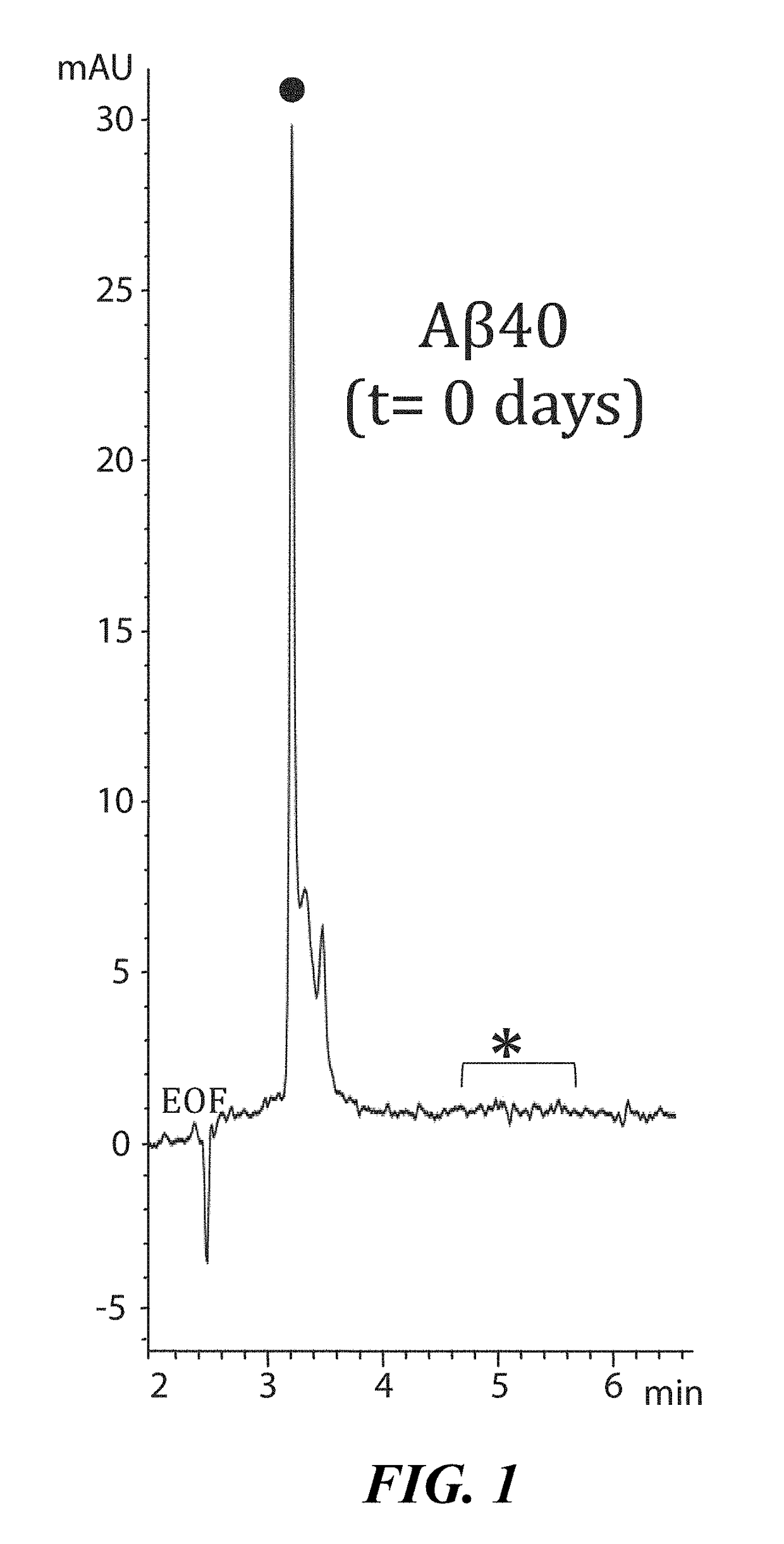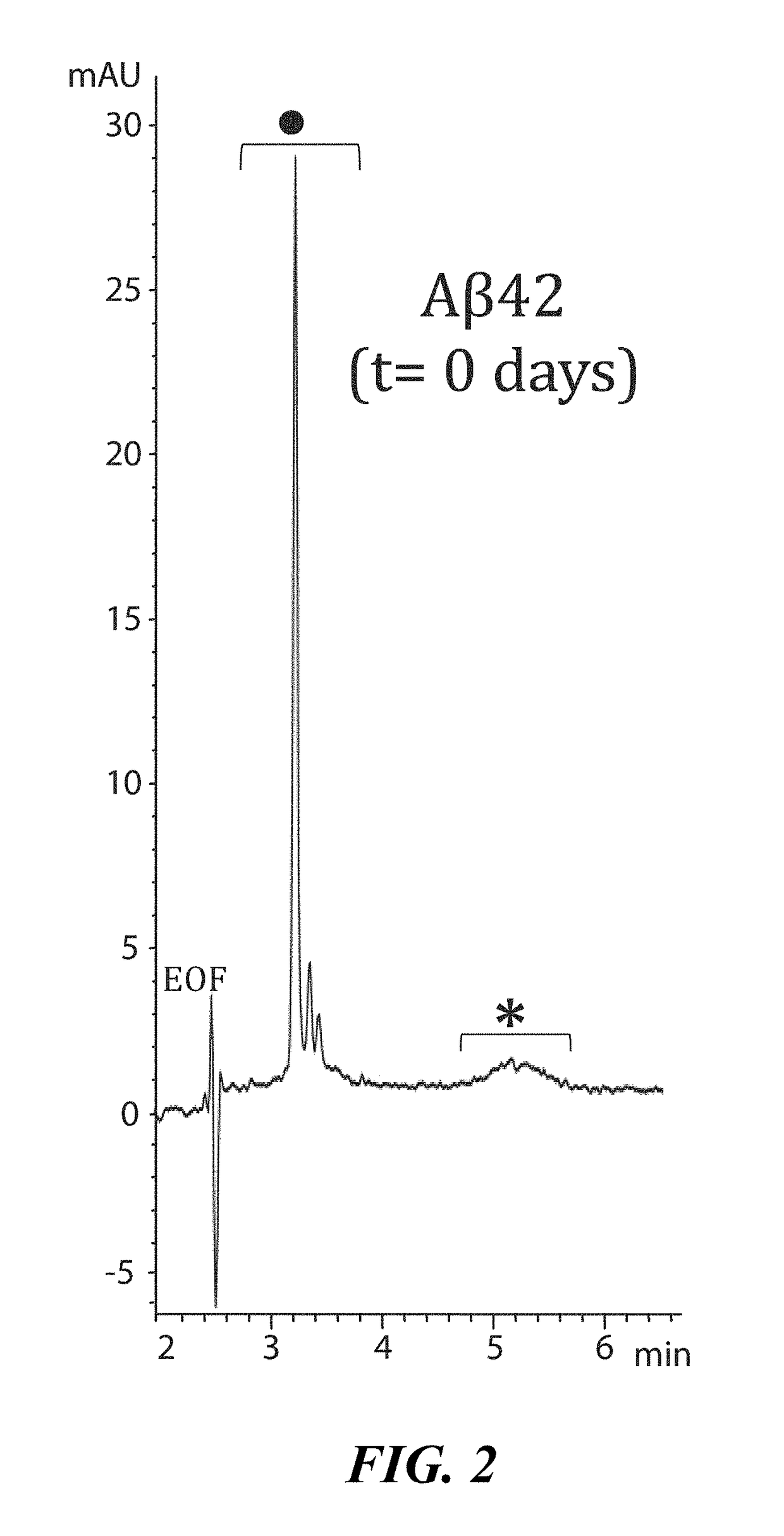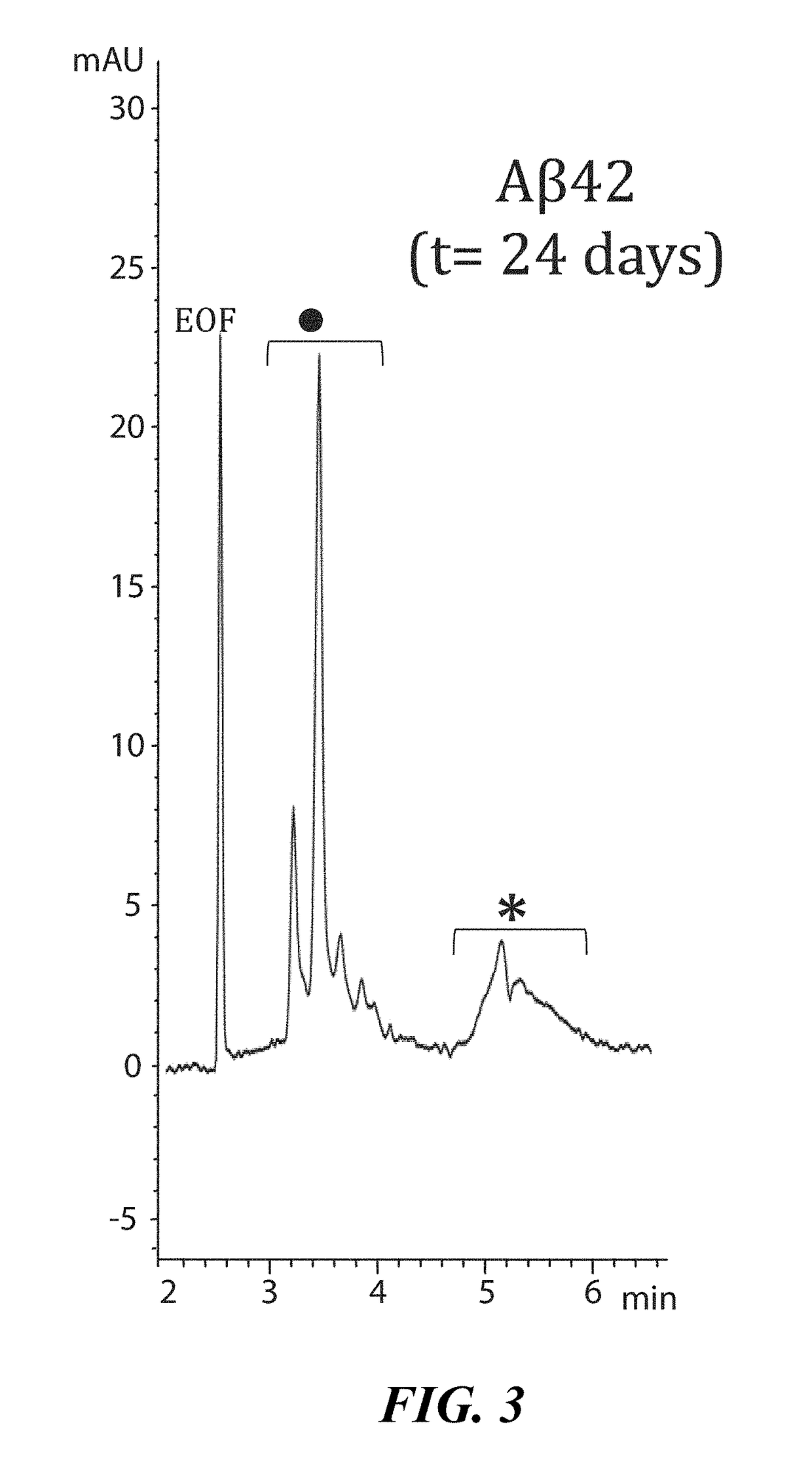Polytherapy modulating cathelicidin gene exprtession modulation for the treatment of alzheimer's disease and other conditions
a technology of cathelicidin and gene expression, applied in the field of gene expression modulation, can solve the problems of chronic urinary tract infections, damage to ocular surfaces, painful fungal infections of mouth, etc., and achieve the effects of promoting bacterial phagocytosis, enhancing autophagy in human monocytes and macrophages, and enhancing cathelicidin ll-37 expression
- Summary
- Abstract
- Description
- Claims
- Application Information
AI Technical Summary
Benefits of technology
Problems solved by technology
Method used
Image
Examples
example 1
ysis of LL-37 Binding to Immobilized Ap; and CE Analysis
[0100]To demonstrate interaction between LL-37 and Aβ42, a Surface Plasmon Resonance imaging (SPRi) biochip was functionalized with copoly(DMA-NAS-MAPS), a polydimethylacrylamide based copolymer, widely used to immobilize biomolecules on microarray slides [REF: Overcoming mass transport limitations to achieve femtomolar detection limits on silicon protein microarrays. Cretich M, Bagnati M, Darnin F, Sola L, Chiari M. Anal Biochem. 2011 Nov. 1; 418(1):164-6. Pubmed ID PMID 21802399]. Three different solutions of 20 μM Aβ-peptides, in different states of aggregation, were spotted onto the SPRi-chip surface. The aggregation state and the presence of soluble oligomers were determined by CE analysis [REF: Disease-modifying anti-Alzheimer's drugs: inhibitors of human cholinesterases interfering with β-amyloid aggregation. Brogi S, Butini S. Maramai S, Colombo R, Verga L, Lanni C. De Lorenzi E, Lamponi S, Andreassi M, Bartolini M, And...
example 2
f Transmission Electron Microscopy Analysis of AP and LL-37 Peptides
[0102]An inhibitory effect of LL-37 peptide binding on fibril formation was demonstrated by transmission electron microscopy (TEM). For these experiments (see Methods), samples were prepared according to a more aggregating protocol [REF: Disease-modifying anti-Alzheimer's drugs: inhibitors of human cholinesterases interfering with β-amyloid aggregation. Brogi S, Butini S. Maramai S, Colombo R, Verga L, Lanni C, De Lorenzi E, Lamponi S. Andreassi M, Bartolini M, Andrisano V. Novellino E, Campiani G, Brindisi M, Gemma S. CNS Neurosci Ther. 2014 July; 20(7):624-32. Pubmed ID PMID 24935788], to mimic quasi-physiological conditions and to better verify LL-37 anti-fibrillogenic activity. Aβ42 reproducibly forms a dense network of interpenetrating, μm-long, straight, unbranched filaments with a diameter of about 10 nm (FIG. 10, n=3), corresponding to known features of classic, mature amyloid fibrils [REF: Molecular mechani...
example 3
f Conformational Analysis by Circular Dichroism (CD) Spectroscopy
[0103]Conformational analyses of Aβ42 peptide in solution, in the absence and presence of LL-37, were carried out by circular dichroism (CD) spectroscopy. As in TEM analysis, spectra were recorded immediately after dissolving peptide according to [REF: Disease-modifying anti-Alzheimer's drugs: inhibitors of human cholinesterases interfering with β-amyloid aggregation. Brogi S, Butini S, Maramai S, Colombo R, Verga L, Lanni C, De Lorenzi E, Lamponi S, Andreassi M, Bartolini M, Andrisano V, Novellino E, Campiani G, Brindisi M. Gemma S. CNS Neurosci Ther. 2014 July; 20(7):624-32. Pubmed ID PMID 24935788] (FIG. 15) and again after 24 hours (FIG. 16). We found that at t=0, Aβ42 assumed an unordered conformation (FIG. 15) whereas over 24 hours, adoption of β-type conformations was observed (FIG. 16), with a characteristic positive band at 195 nm and negative band at 215 nm. On the other hand, 50 μM LL-37 at t=0, immediately ...
PUM
| Property | Measurement | Unit |
|---|---|---|
| concentrations | aaaaa | aaaaa |
| concentration | aaaaa | aaaaa |
| concentrations | aaaaa | aaaaa |
Abstract
Description
Claims
Application Information
 Login to View More
Login to View More - R&D
- Intellectual Property
- Life Sciences
- Materials
- Tech Scout
- Unparalleled Data Quality
- Higher Quality Content
- 60% Fewer Hallucinations
Browse by: Latest US Patents, China's latest patents, Technical Efficacy Thesaurus, Application Domain, Technology Topic, Popular Technical Reports.
© 2025 PatSnap. All rights reserved.Legal|Privacy policy|Modern Slavery Act Transparency Statement|Sitemap|About US| Contact US: help@patsnap.com



